The House
The Art Deco villa from 1928 unveils an exceptional collection of artworks, rare furniture, signed rugs, stained glass, sculptures, and paintings by Belgian and international masters from the 15th to the 20th century. This house-museum, a living testament to the interwar period in Belgium and Europe, offers a captivating immersion into artistic history. Outside, the typical Amsterdam School architecture blends seamlessly with an Art Deco interior, creating a unique ensemble designed by the van Buurens and renowned decorators. The villa thrives as a living conservatory, passionately preserving artistic heritage through its rich collection, harmonizing history and art in an enchanting setting.
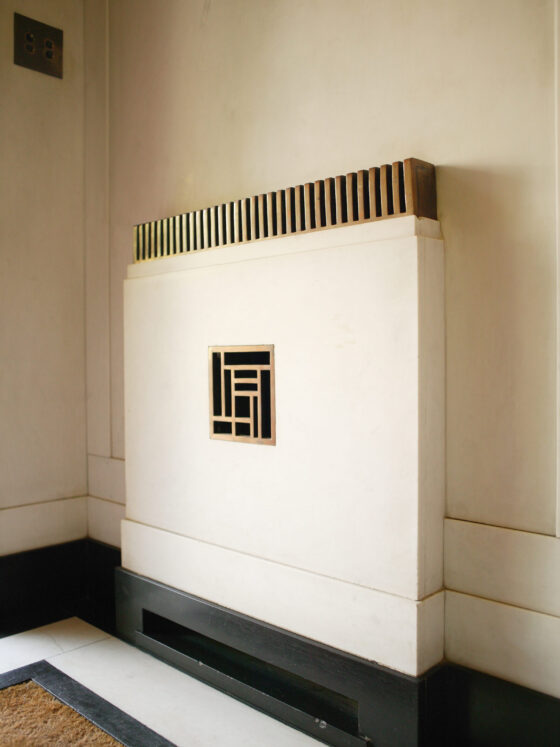
The Vestibule
Upon entering, the Dutch spirit of the exterior architecture gives way to the distinctly French character of the interior. The Brazilian rosewood door, adorned with stained glass by Jaap Gidding (1887-1955), is echoed by the double doors leading to the grand hall. The floor features black and white Carrara marble, while the marble radiator cover, with its central geometric bronze motif, was crafted by Studio Dominique.
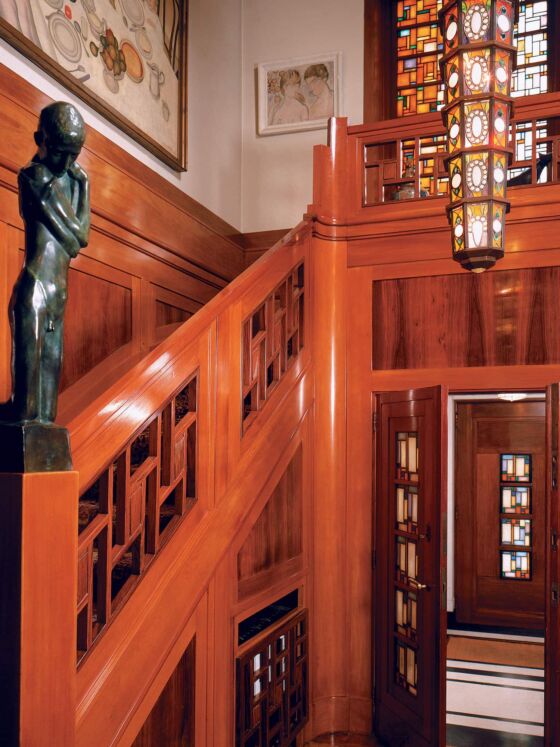
The Hall and Staircase
In the original plans, the hall and staircase were smaller However, in 1925, at the International Exhibition of Decorative Arts in Paris, the couple acquired the magnificent bronze and glass paste suspended light fitting by Jan Eisenloeffel (1876-1957). With the new fitting now out of proportion to the surrounding space, David van Buuren decided to remove the guest room planned for the upper floor in order to enlarge the hall and better showcase the light fitting. The Kneeling Figure by Georges Minne (1866-1941) stands prominently at the base of the staircase, which was designed around this it. The walnut veneer grandfather clock, with marquetry and gilded bronze, is a 17th-century family piece by Johannes Duchesnes.
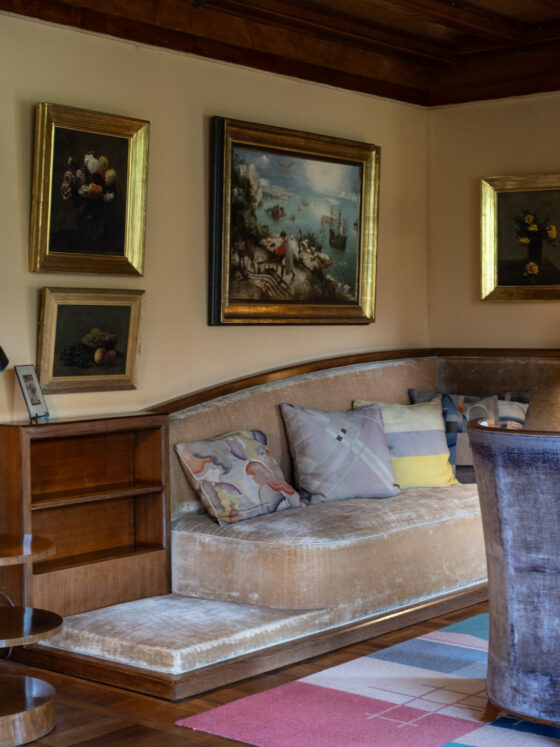
The Cosy Corner
Designed for reading, this salon is named after the "cosy corner" sofa. David van Buuren’s meticulous attention to detail extended to including a special cushion at the end of the sofa for their dog Patroclus. The black Labrador marble fireplace was custom-designed to showcase Marine de Nuit by Constant Permeke (1886-1952) and the Spirit of Fire gilded bronze andirons by Belgian artist Dolf Ledel (1893-1976). The geometric rugs are creations of Jaap Gidding. Between three still lifes by Henri Fantin-Latour (1836-1904) hangs The Fall of Icarus, attributed to the circle of Pieter Bruegel the Elder (late 16th century). The small roll-top desk by Studio Dominique combines exotic Art Deco woods (rosewood and sycamore) with metal elements.
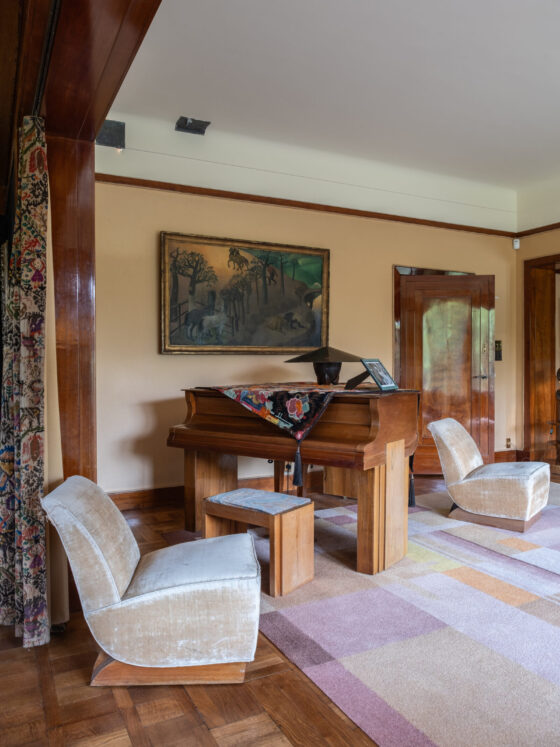
The Music Room
Two large rosewood-framed windows with Japonisme-inspired design and very low windowsills offer a stunning view of the Picturesque Garden designed by Jules Buyssens (1872-1958). The van Buurens hosted numerous concerts in this room, which features an acoustically enhanced ceiling. Jaap Gidding (1887-1955) left his mark on the room with a hand-embroidered golden tapestry, placed on the piano, and a rug with highly avant-garde patterns. A superb tripod lamp by Belgian artist Maurice Gaspard (1890-1954) is positioned on the tapestry.
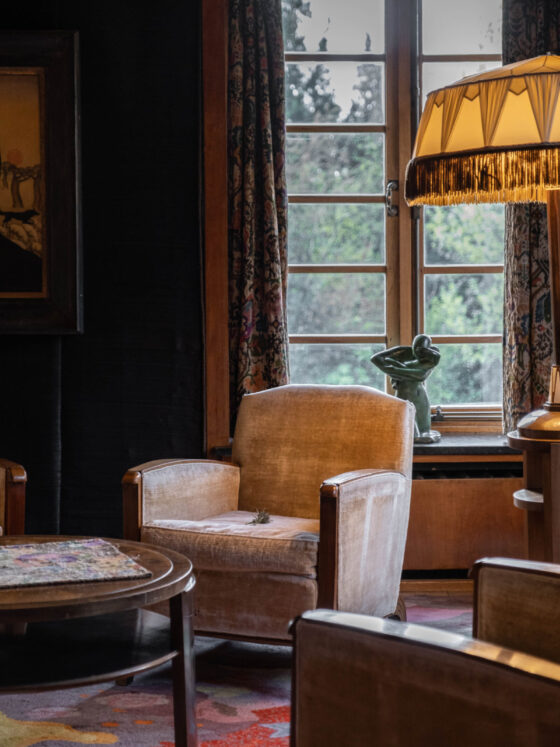
The Black Lounge
In September 1928, Studio Dominique proposed covering the walls with black or blue linoleum, but David van Buuren declined this option. The final choice was black horsehair from the Saumur Cavalry School, which gives the room its name. The colour harmony between Kees Van Dongen’s (1877-1968) The Thinker and the monogrammed rug by Jaap Gidding (1887-1955) is intentional. David van Buuren specifically commissioned a rug from the Dutch designer, requesting a colour palette that matched the tones of the painting. The prominent positioning of The Shepherd by Gustave Van de Woestyne (1881-1947) highlights the significance David van Buuren attached to his friendship with the Laethem-Saint-Martin painter.
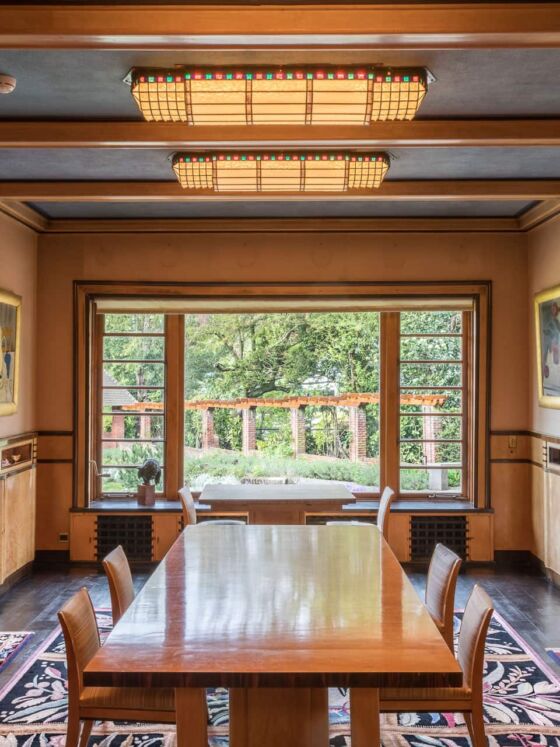
The Dining Room
For the dining room the van Buurens chose white Jerusalem sycamore with accents of Macassar ebony. The dining room furniture was commissioned from Belgian cabinetmaker Joseph Wynants. Above a sideboard with a Labrador marble top, a striking tapestry by Jaap Gidding (1887-1955) depicts the theme of the four elements in a futuristic style. The set of five rugs that make up the Botanical Gallery was created by French artist Maurice Dufrêne (1876-1955). Suspended from the ceiling, between wide-spaced exposed beams, are three white glass light fixtures encircled with stained glass from the Amsterdam School, specifically designed for the dining room. Six still lifes, commissioned from Gustave Van de Woestyne (1881-1947) between 1928 and 1931, complete the room’s décor.
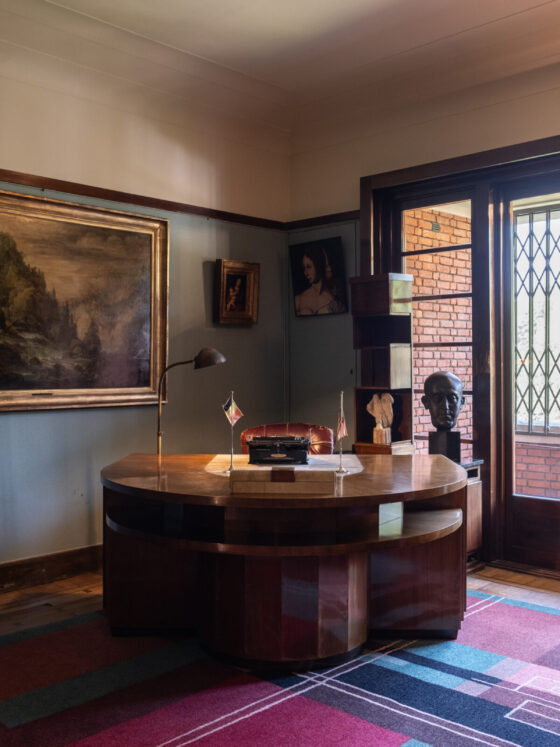
The Office
The atmosphere of the room is subdued, with dark tones prevailing. Le petit vitrail de Jaap Gidding (1887-1955) “La Nuit étoilée” confère au bureau une touche mystique. The wool rug is also designed by Jaap Gidding. The centrepiece of this ensemble is undoubtedly the crescent-shaped walnut desk, built by the Studio Dominique based on a design by David, and featuring a shagreen leather inlay .
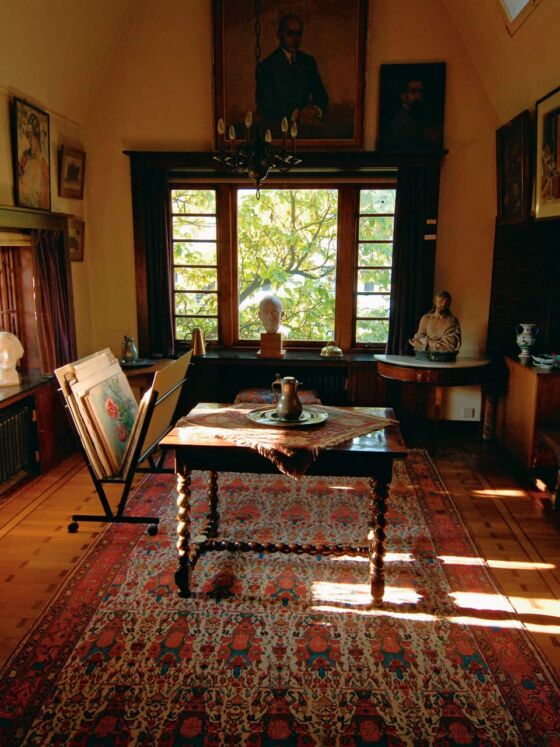
The Studio
The Studio exudes an atmosphere distinct from the Art Deco style found elsewhere in the villa. It was a space where David van Buuren came to paint and draw. The decor here is eclectic, with furnishings, paintings, and objects ranging from the 17th century to the present day. A display cabinet features a large silver key, symbolizing the opening of the Collegium Fabiolanum in Jerusalem. This institution, exclusively funded by Alice van Buuren, continues to host scientific missions to this day.